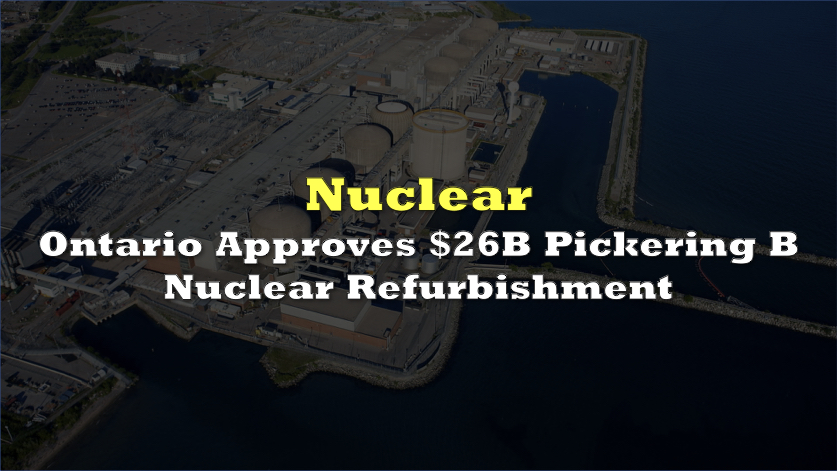Ontario has approved a full refurbishment of the Pickering Nuclear Generating Station’s B site, described as a roughly $26.0 to $26.8-billion capital decision to return about 2,200 MW of firm capacity to the grid while supporting 30,500 jobs during construction and 6,700 jobs during ongoing operations.
On operating performance, Pickering’s 2023 energy production of 21.5 TWh and roughly 14% of provincial demand, plus a 2022 stretch where all six units ran 109 consecutive days through peak summer conditions, positioning sustained output as the key economic attribute being purchased.
Ontario has officially approved the full refurbishment of the Pickering Nuclear Generating Station at an estimated cost of 26 billion.
— chris keefer (@Dr_Keefer) November 26, 2025
This is one of the most important industrial decisions in modern Canada and it is a genuine victory for Canadians for Nuclear Energy and our… pic.twitter.com/WwqGqyTHjw
The project’s core comparison is against Ontario’s Darlington small modular reactor program, projected at about $21.0 billion for roughly 1,200 MW, implying more megawatts per dollar from refurbishment versus new build. Using only those figures, Pickering’s implied capital intensity is about $11.8 million per MW versus about $17.5 million per MW for the SMR plan.
The July 2022 “Save Pickering” report framed Pickering’s planned 2025 closure as the loss of 3.1 GW of capacity supplying roughly 17% of Ontario electricity, and linked that exit to 8.7 megatonnes per year of incremental emissions, $2.8 billion spent in 2020 on gas assets, and a capacity shortfall that could reach 3.6 GW by 2030, rising to 9.5 GW when electrification demand is included.
That same report estimated refurbishing the four Pickering B units at $8.8 billion over 10 years plus a $1.2 billion contingency for a $10.0 billion total, or $2.5 billion per unit, with each unit taking an estimated three to four years and start dates staggered by two years.
The report’s economics case leaned on an annual $3.1 billion “renewable cost shift” tied to above-market wind and solar contracts and a $38 billion 2020–2040 subsidy estimate, with the claim that three years of that $3.1 billion annual burden could finance a refurbishment-scale spend while Pickering’s annual 23 TWh output exceeds the roughly 15 TWh combined output from wind and solar secured under the Green Energy Act.
It also quantified Ontario’s 2020 wind curtailment at 2,300 GWh, and cited average generation prices of 9.6 cents per kWh for nuclear versus 15.4 cents for wind and 49.8 cents for solar.
On macro costs, the report argued refurbishment and decommissioning were similar-sized checks, noting a $20.0 billion Canadian decommissioning fund with roughly $8.0 billion set aside for Pickering and an Ontario Ministry of Energy analyst estimate that decommissioning and spent fuel storage could cost as much as $9.5 billion in 2016 dollars.
Jobs and GDP impacts were framed in the report as 7,600 full-time-equivalent jobs sustained by Pickering and a $1.54 billion annual GDP contribution estimate from the Ontario Chamber of Commerce.
Information for this story was found via the sources and companies mentioned. The author has no securities or affiliations related to the organizations discussed. Not a recommendation to buy or sell. Always do additional research and consult a professional before purchasing a security. The author holds no licenses.






